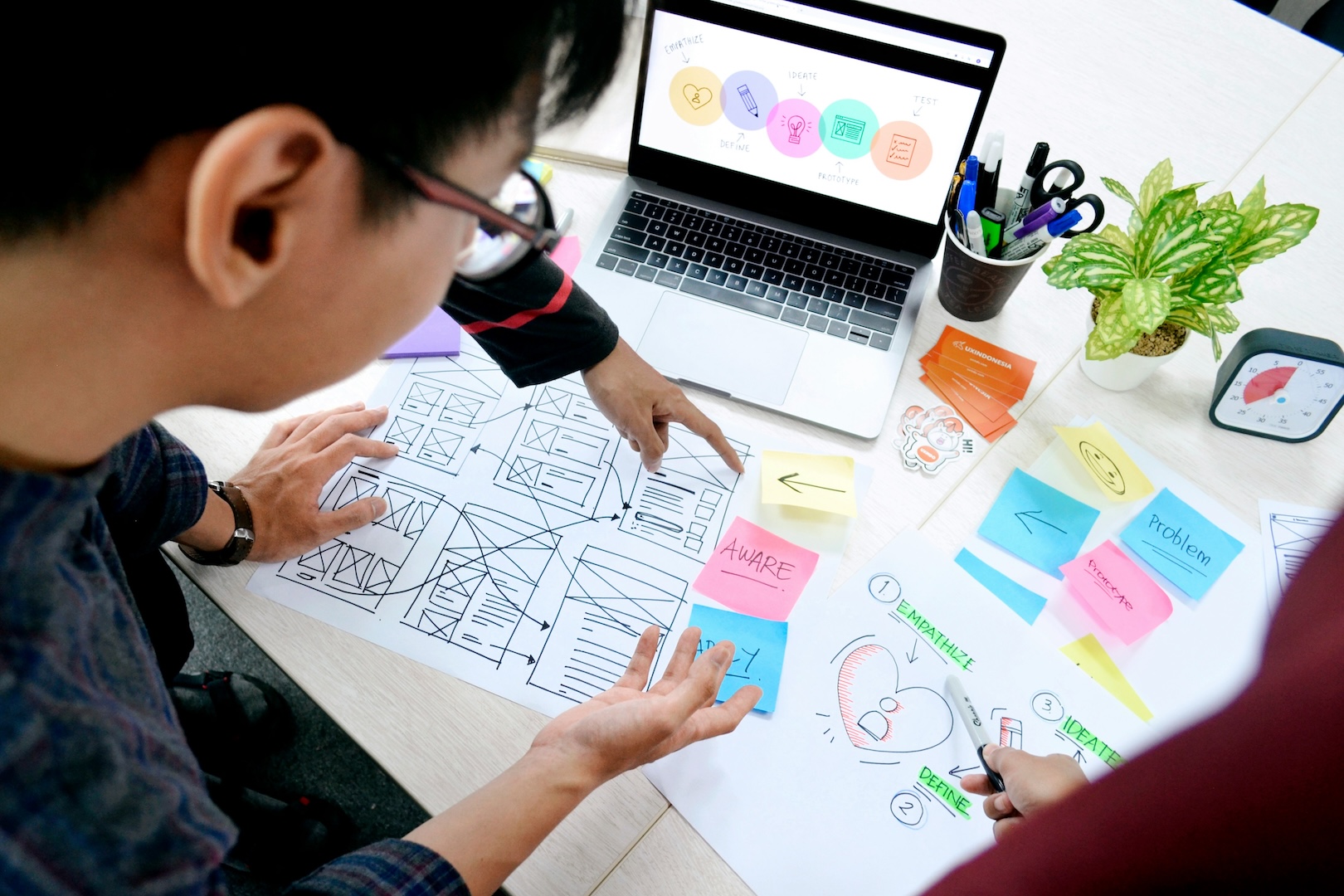Every morning, I walk out to my chicken coop to collect eggs, and I'm reminded of a fundamental truth about human psychology that applies far beyond the farmstead: presentation matters profoundly, often more than the substance itself. The same principle that governs why clean, colorful eggs in a vintage cardboard carton sell faster and for more money than plain white eggs in a styrofoam container has long been part of the software industry conversation, and it continues to shape how we think about user experience and product success.
The Farmstead Lesson
On my small farm, I've discovered that the visual story of eggs begins the moment customers see them. Picture the contrast: my cardboard cartons cradle a rainbow of shells in creamy whites, speckled browns, and soft blues and greens. Compare this to the sterile uniformity of jumbo white eggs in plastic or styrofoam containers—industrial perfection but with no story or connection to place or care. They're efficient, but they lack soul.
Even when eggs are functionally identical underneath their shells, the packaging becomes theater. Our ink-stamped cartons tell a story of authenticity and craft that plastic containers simply cannot. Customers willingly pay premium prices not just for cleanliness, but for the complete experience. The aesthetics aren't superficial; they're the first chapter of the story these eggs will tell on someone's breakfast table.
This is a lesson on how the human brain processes information and makes decisions. We're wired to make rapid judgments based on visual cues, and these first impressions carry enormous weight in our subsequent evaluations. The same psychological mechanisms that make a customer choose attractively presented eggs are at work every time someone interacts with software.
The Software Aesthetic Imperative
In the software world, this translates to a simple but often overlooked truth: beautiful software wins. Not because it's necessarily more functional, but because humans are fundamentally visual creatures who equate aesthetic appeal with quality, trustworthiness, and value. The interface is the shell, and most users never get past judging the shell to discover what's inside.
Consider the last time you downloaded an app or visited a website. Within seconds—often before you even read the text—you formed an opinion about the product's quality based purely on its visual design. Clean typography, thoughtful spacing, harmonious colors, and intuitive layouts signal professionalism and competence. Conversely, poor visual design immediately raises questions about the creators' attention to detail and, by extension, the quality of the underlying product.
When faced with countless software options, users need a way to quickly filter and evaluate. Visual design serves as a proxy for overall quality because, historically, organizations that invest in good design tend to invest in good engineering, user experience, and customer service.
The Compound Effect of First Impressions
The aesthetic bias shapes the entire user experience. When software looks professional and polished, users approach it with higher expectations and greater patience. They're more likely to explore features, forgive minor bugs, and recommend it to others. Beautiful software creates a halo effect that elevates every interaction.
Conversely, software that looks outdated, cluttered, or amateurish faces an uphill battle. Even if the underlying functionality is superior, users approach it with skepticism. They're quicker to abandon it when they encounter problems and less likely to invest time in learning its capabilities. The visual design has already primed them to expect a subpar experience.
When customers see beautiful eggs in an attractive carton, they're primed to expect quality. They handle them more carefully, ask more questions about my farming practices, and often become repeat customers. The beautiful presentation creates a positive feedback loop that enhances the entire relationship.
Beyond Surface Beauty
True design excellence goes deeper than surface aesthetics. The best software design creates harmony between form and function. My pasture-raised eggs aren't just nutritionally superior—they're also more beautiful, with rich yolks that reflect the hens' healthy diet and living conditions. The beauty and quality are inseparable.
Similarly, great software design isn't just about making things look pretty. It's about creating visual hierarchies that guide users intuitively through complex tasks, using color and contrast to communicate important information, and designing interactions that feel natural and effortless. When aesthetics and functionality align, the result is software that works beautifully.
In an increasingly crowded software landscape, aesthetic excellence has become a competitive differentiator. Two products with similar functionality will not compete on equal terms if one is visually superior. The beautiful software will acquire users faster, retain them longer, and command higher prices.
Companies that understand this principle invest heavily in design. They recognize that aesthetic appeal isn't a luxury, but instead a fundamental requirement for success. They hire skilled designers, invest in user research, and iterate relentlessly on the visual and interactive elements of their products.
The Evolution of Priorities
Many software companies find themselves navigating an interesting evolution: they've built something functionally excellent while operating under different strategic priorities. As an organization, we started by prioritizing delivery and speed—not because we didn't care about aesthetics, but because we had to make choices that aligned with our priorities as a company, which was serving as many organizations as quickly as possible with measurable impact.
For years, we focused on building robust functionality and ensuring our platform could handle the demands of rapid growth and diverse user needs. We were creating genuine value and solving real problems for our users. These foundational investments in capability and reliability have served us well and positioned us strongly in the market.
Now, as we've achieved stability and scale, we have the opportunity to enhance how our platform presents itself to the world. The decision to invest in a comprehensive design refresh isn't about fixing something broken—it's about taking what we've built and presenting it in a way that immediately communicates its true value to users.
The Strategic Design Investment
Redesigning established software presents unique opportunities that don't exist when starting from scratch. Unlike building a new platform where you must simultaneously develop functionality and aesthetics, we have the advantage of proven capabilities and deep user insights. We know what works, what our users value, and how they interact with our platform.
The key is approaching the refresh strategically: enhance what works, elevate what serves users well, and ensure that our interface properly showcases the depth and power of our existing capabilities. Our software's functionality has always been strong—we're now giving it the visual treatment that allows users to immediately recognize and appreciate that strength.
The Path Forward
The lesson from my farmstead is clear: never underestimate the power of presentation. Whether you're selling eggs or software, presentation matters. But this doesn't mean sacrificing substance for style. The goal is to achieve products that are both beautiful and exceptional in quality.
For software creators, especially those undertaking design refreshes, this means embracing the bias for beauty while celebrating the functionality that users depend on. It means recognizing that good design isn't just about making things look pretty, but about creating experiences that are both visually appealing and genuinely useful. It means understanding that in a world of infinite choices, beauty is a strategic advantage.
Our current UI/UX refresh embodies this philosophy. We're not changing what our software does; we're enhancing how it presents itself to the world. We're taking the solid foundation we've built and giving it the modern, polished interface that properly reflects the quality and sophistication of the platform underneath.
The next time you're evaluating software priorities, remember the lesson from the farmstead. The most nutritious, flavorful egg in the world can reach even greater market potential when it's beautifully presented. Similarly, powerful software can achieve even greater success when it respects users' fundamental need for beauty and order.
In the end, the bias for beauty is a feature of human psychology. And software that harnesses this feature, rather than fighting it, will always have the advantage. Sometimes, the best path forward is taking what you've already built and presenting it in a way that does justice to its true value—allowing users to immediately recognize and appreciate the depth of capability that lies beneath the surface.







